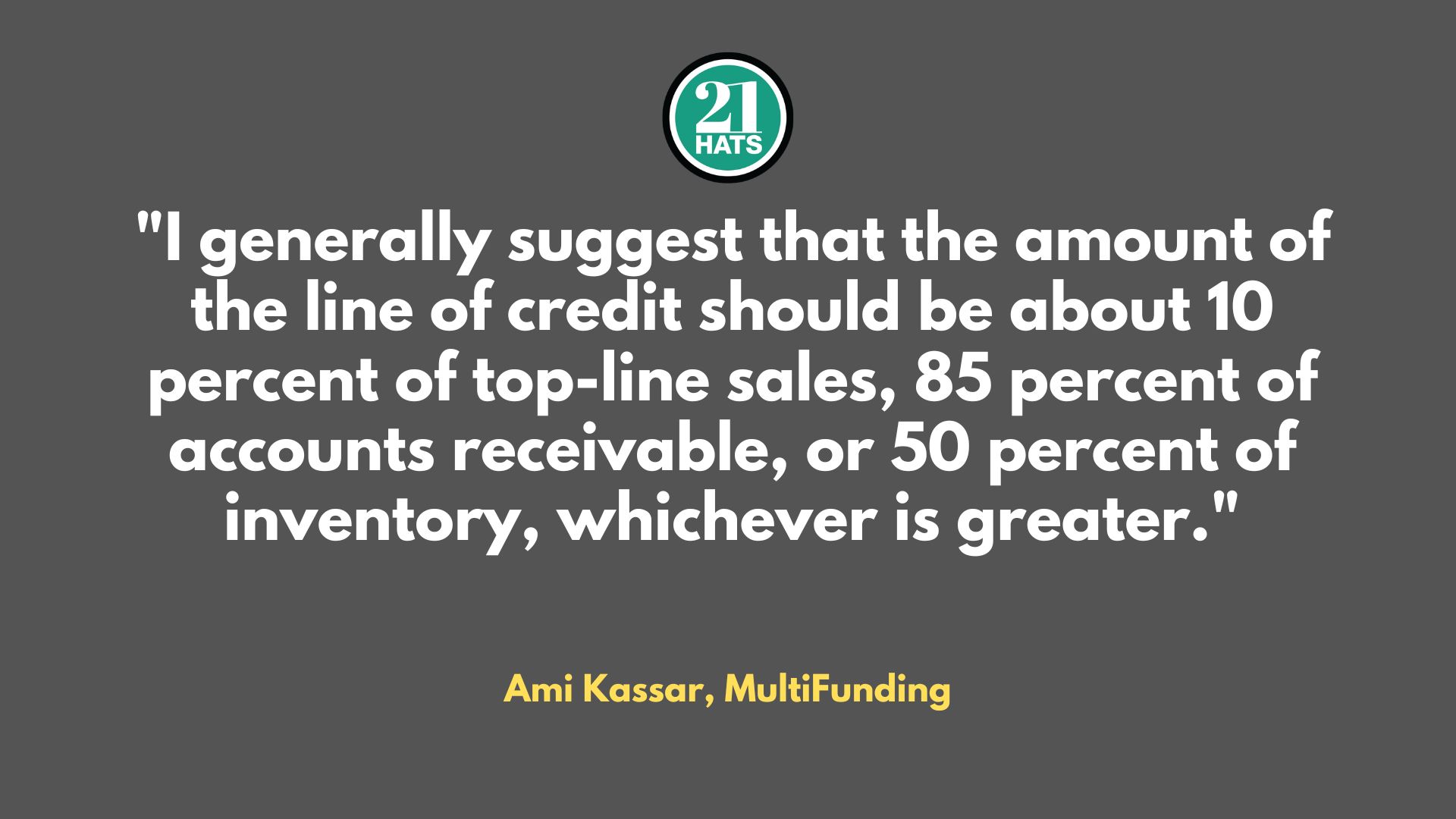If You Can Get a Line of Credit, Get a Line of Credit

Think of it as an insurance policy. You don’t have to spend it.
By Ami Kassar
I often meet entrepreneurs who have solid, profitable businesses and no debt. When I ask whether they have a line of credit for use in case of an emergency, they frequently answer that they are reluctant to get a line of credit because they are risk-averse and afraid to take on debt. This answer makes no sense to me.
There are a few things about lines of credit that are important to understand. For example, you are not required to use it. It is a checkbook that would give you some options and flexibility should your world turn upside down unexpectedly. Liquidity provides leverage and insurance, especially for small business owners. Try thinking of the line of credit as an insurance policy. How much life insurance do you have? And what premium do you pay for it? Just as with life insurance, you are paying for the security that the line of credit provides you.
We all have short memories. When things are going well, we naturally think the good times will go on forever. But if Covid taught us anything, it is that the world can turn on a dime, often in ways we could never imagine let alone predict. This lesson was reinforced for me during the Great Recession.
Like many of you, I spent some of my early career with a big corporation. By 2008, I was chief innovation officer at a company that was one of the largest issuers of credit cards to small businesses. As the recession hit, more and more of my colleagues were laid off. Finally, one Friday, it was my turn. On my way home from being laid off, I stopped at a bank and deposited a check for the full amount of my home equity line of credit. The check had been sitting in my desk, unused, for the previous seven years. I started my company, MultiFunding, the next day.
I tell this story because it fits well with the current uncertainty we face with our economy. When I took out that home equity line seven years earlier, I had no idea what I would ever use it for. But I knew that I would likely face some unexpected challenges and opportunities at some point. I recognized back then that getting the home equity line while I was financially stable enough to be approved was the right choice. Had I not done that, I have no idea what I would have done after being laid off.
And that is why I always tell entrepreneurs and small business owners that the best time to get a loan or line of credit is when you don’t need one. It can be challenging—or near impossible—to get financing when you’re at the bottom of the trough rather than surging to the top of the hill. When you obtain a line of credit, I generally suggest that the amount should be for about 10 percent of your top-line sales, 85 percent of accounts receivable, or 50 percent of inventory, whichever is greater.
Ami Kassar is CEO of MultiFunding.